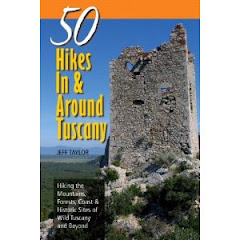After a few days in the urban jungle of San Diego, it was off to Mountain Palm Springs Oasis in Anza Borrego Desert State Park. Located about 2 hours east of San Diego, this is the state park where we spent several weeks during the winter of 2010. So, if these pictures seem familiar, that's why. In fact, we decided to disperse camp at our favorite site from that trip, which is at Mountain Palm Springs.
Mountain Palms Springs Oasis is located just off the Imperial Highway that cuts up from I-8 at Ocotillo and heads north to Borrego Springs. It's pretty close to the border, so there's lots of Border Patrol activity in the area, including a checkpoint and helicopters that fly over head. But, most of the aliens we encountered were Canadians who camp out in the desert all winter before heading back north in summer.
We set up our little tent city and enjoyed several beautiful sunny and warm days in the desert. The mornings were chilly, but nothing a little campfire of some dead creosote bush and chollas can't fix. We took Hello Kitty and Sophie with us, and Kitty was just find wandering around the campsite. We had a long line for her, but she got tangled up so often, we finally gave up on it. She never ventured more than about 50 feet away, but we always had someone assigned to keep an eye on her so she didn't get lost or become coyote food.
From the camping area, there are two palm groves that are visible about 1/2 mile away. These California fan palms are relicts of the Ice Age when they were distributed all across Southern California and Arizona. But, with the warming and drying of the region, they are now limited to just 153 distinct groves, each containing just a few to a few dozen individuals.
One morning I hiked up to the northern grove, the one we went to on our previous visit. It was that previous visit where I decided to climb up onto the ridge above the grove and peek around and noticed another grove in the next valley over. However, I did not descend the ridge into that grove that time, so I decided to do it this time and see if I could make a loop out of the hike.
| Bunches of palm fruits hanging down |
What I noticed in this second grove was that many of the palms had plumes of fruit hanging down. I read at Joshua Tree that these fruit were really important to the native peoples of the area because it was one of the only sources of sugar in the desert. The birds certainly love them, as they are all over these groves (the available water in the desert is also the key). So, I decided I needed to try them. First I grabbed a large fallen palm frond to try and smack a bunch off the tree. But, it was not quite large enough. So, I resorted to throwing rocks. Eventually I hit the clump and a bunch of the tiny fruits fell to the ground. Maybe it was late in the season and they had started to dry out, but there isn't much flesh on them. It's like a slightly sweet layer of leather over a large nut.
| Coyote scat consisting of almost nothing but palm fruits |
From this grove, I decided to start walking up the ravine, where I quickly encountered another grove. From there I spotted the tops of two more palms above the rocks, so I continued up the wash and found those two. At this stage the wash entered a deep narrow canyon. I continued up past the shady canyon and into a large open amphitheater at the base of the mountains. It was there that I found the motherlode.
| Look back at the north grove from the ridgetop before I began my explorations |
There was an old faded sign that called this the "Palm Bowl Grove" and there must have been well over 100 mature palms in the grove. In the middle of the grove was a large mound of deposits where the spring at the base of the mountain has flowed for millenia despositing sediments and evaporites (like calcium carbonate). No water was present on the surface (but the ground was moist), but it appeared based on the shape of the mound as though it must have flowed more vigorously in wetter times.
| A sample of the Palm Bowl Gove with the sediment mounds in front |
During our stay at Anza Borrego Desert State Park, we also made a return trip to Agua Caliente County Park to soak in the hot springs. You can read about what I wrote about that in 2010 here: http://www.taylorlenz.com/2010/03/agua-caliente-county-park-in-anza.html
But, instead of carrying Hilina on my back for the Moonlight Canyon Hike, she was able to do the entire loop this time! My final post of this series will be a hike description for Garnet Peak in the Laguna Mountains nearly 6000 feet above where we were camping. That'll be posted over at the Hikemasters site in the coming days.
 |
| Hilina and Linda hiking down Moonlight Canyon |
But, instead of carrying Hilina on my back for the Moonlight Canyon Hike, she was able to do the entire loop this time! My final post of this series will be a hike description for Garnet Peak in the Laguna Mountains nearly 6000 feet above where we were camping. That'll be posted over at the Hikemasters site in the coming days.
 |
| A view out to Whale Peak from Agua Caliente County Park |







